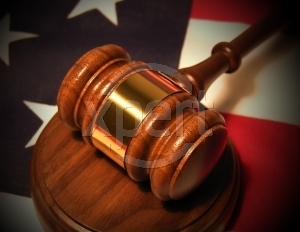The concept of hearsay can be quite a complex matter to understand. There are different rules of when hearsay is admissible and when it is inadmissible. A general knowledge of the hearsay rule is needed when dealing with informants. There are several different exceptions to this rule. These exceptions to the hearsay rule will be discussed with an emphasis on recorded recollections and family records along with a general overview of the hearsay rule and when it applies.
The hearsay rule dates back to England in 1603 when Sir Walter Raleigh stated that he was going to cut the King’s throat. This statement was overheard by a witness who, in turn, told another individual. By making this statement Raleigh was tried for treason (O’Connor, 2004). It was because of this case that the English jurists quickly developed the hearsay rule.
What is hearsay? Hearsay, under the Federal Rules of Evidence Rule 802(c), is defined as “a statement, other than one made by the declarant while testifying at the trial or hearing, offered in evidence to prove the truth of the matter asserted” (Nemeth, 2001, p. 20, Para 5). A declarant is an individual who gives the original statement but is usually unavailable to testify or cross-examination (Nemeth, 2001). A statement that is made out of court is considered hearsay if it is being used to prove a statement of truth or the truthfulness of the writing or act (Nemeth, 2001). A statement can be one of the following two: (a) oral or written assertion or (b) nonverbal demeanor (O’Connor, 2004).
Within the hearsay rule lays two categories of hearsay: assertion hearsay and declarant hearsay (O’Connor, 2004). Assertion hearsay is presented as evidence for the sole purpose of providing truth of the matter or imperative fact. Declarant hearsay is used only if there is some type of credibility of the witness testifying. The most common form of hearsay that is used within a criminal trial is declarant hearsay and makes use of the individual’s behavior as a way of impeachment or betrayal (O’Connor, 2004). One should know that if the courts rely too heavily upon hearsay evidence that there is a great chance that courts findings will be reversed because of errors made (O’Connor, 2004).
There are questions about when and where hearsay may be admissible in a court of law. While under USAM 9-11.232 authorizes the use of hearsay during federal grand jury hearings, hearsay is generally not used in criminal trials, unless the hearsay adheres to the exceptions to the rule. USAM 9-11.232 states:
“As a general rule, it is proper to present hearsay to the grand jury. Each Attorney should be assured that hearsay evidence presented to the jury be presented on its merits so that the jurors are not misled into believing that the witness is giving his or her personal account” (USAM, 2005). This means that hearsay evidence can be presented but the attorney presenting the evidence may not present the evidence in a way that is prejudicial, and therefore; not allowing for proper judgment to be made.
There are several exceptions to the rule of hearsay under FRE 801. These exceptions are generally thought to not be hearsay in a court of law. These exceptions are:
1. Prior statements under oath;
2. Admissions against interest;
3. Present sense impressions;
4. Excited utterance;
5. Dying declarations;
6. Recorded recollections;
7. Records/Government Documents/ Vital Statistics;
8. Matters of Pedigree or Family Records; and
9. Miscellaneous exceptions (Nemeth, 2001).
In addition to these exceptions to the hearsay rule is lies another concept called “Residual Exceptions” (Nemeth, 2001). This extended exception to the hearsay rule gives the courts the right to determine whether or not a statement is deemed hearsay. FRE Rule 807 states the following:
“A statement not specifically covered by Rule 803 or 804 but having equivalent circumstantial guarantees of trustworthiness, is not excluded by the hearsay rule, if the court determines that (A) the statement is offered as evidence of a material fact; (B) the statement is more probative on the point for which it is offered than any other evidence which the proponent can procure through reasonable efforts; and (C) the general purposes of these rules and the interests of justice will best be served by admission of the statement into evidence” (Nemeth, 2004, p. 22, Para 3).
The recorded recollections exception is a rule that utilizes written documentation such as letters, memorandums, and records. These forms of written documentation are useful to a witness as a way to refresh memory. These documents are generally admissible to the courts because they present no falsehood and are rarely altered. These documents hold a high standard of credibility which can not be attested (Nemeth, 2001). Some questions that may be asked of the witness to ensure that this hearsay exception is granted are:
1. Do you presently have any recall of these facts?
2. Did you have personal knowledge of the facts in the past?
3. Was that knowledge recorded in writing? (Nemeth, 2001).
Now these previous questions are only a few of the necessary questions that should be asked when presenting this form of evidence to the courts.
The family record exception is similar to that of recorded recollections. Family records hold a high degree of credibility because families generally do not lie about genealogy. These records are usually held in the family Bibles, genealogical charts, ring engravings, family portraits, and other family heirlooms (Nemeth, 2001). It is believed that would be quite difficult to falsify ones genealogy, thus leaving the family pedigree as an honest form of hearsay.
In conclusion, the hearsay rule can help both the prosecution and the defense. By understanding what the hearsay rule is and when it applies, the cases of hearsay within the wiretap case will be easier to define and noted how to use each form. Also, knowing the exceptions to the hearsay rule provides a vast array of material a prosecutor may utilize in determining credibility and truthfulness of the defendant in almost any case.
References
Lect Law. Hearsay defined and explained. Retrieved 30 November 2005 from
http://www.lectlaw.com/def/h007.htm .
Nemeth, C.P. (2001). Law & evidence: a primer for criminal justice, criminology, law, and
legal studies. Upper Saddle River, NJ: Prentice-Hall Inc.
O’Connor, T. (2004). Hearsay rule and exceptions. Retrieved 28 November 2005 from
http://faculty.ncwc.edu/toconnor/405/405lect11.htm .
Rule 803. Hearsay exceptions; availability of declarant immaterial. Retrieved
28 November 2005 from
http://www.law.cornell.edu/uscode/html/uscode28a/usc_sec_28a_04000803—-000-.html.
USAM. USAM 9-11.00 Grand Jury. Retrieved 30 November 2005 from
http://www.usdoj.gov/usao/eousa/foia_reading_room/usam/title9/11mcrm.htm#9-11.232 .



